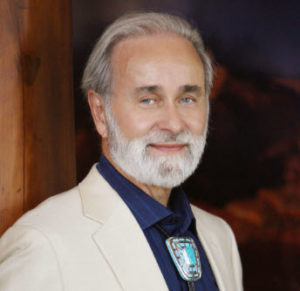To be considered to teach a course, a proposal must be submitted between September 20 and October 19
The Osher Lifelong Learning Institute (OLLI) has announced that it is accepting proposals for new courses beginning September 20 and ending October 19. To obtain more information, please visit the OLLI website about submitted a proposal by clicking here.

 Yavapai Community College is inviting the community to celebrate the 40th anniversary of the International Day of Peace September 21. It has scheduled three special events on the Prescott Campus with the goal of reminding “us of the enduring pursuit to quash armed conflict.”
Yavapai Community College is inviting the community to celebrate the 40th anniversary of the International Day of Peace September 21. It has scheduled three special events on the Prescott Campus with the goal of reminding “us of the enduring pursuit to quash armed conflict.”



 Yavapai Community College is offering to pay for childcare for some students as long as a number of restrictions are met, and the child is receiving care under a certified DES/DHS provider. The program is available as long as the College has funding for it.
Yavapai Community College is offering to pay for childcare for some students as long as a number of restrictions are met, and the child is receiving care under a certified DES/DHS provider. The program is available as long as the College has funding for it. 
 The Yavapai Community College Foundation announced in a press release August 31 that ten nursing students and two Radiology students had been awarded Community Healthcare Scholarships for 2022. Each student receives a full two-year scholarship in exchange for a commitment to graduate and share their newfound skills in Yavapai County. Yavapai Community College Director of Nursing Dr. Marylou Mercado said that the “full scholarship allows students to complete their nursing degree tuition debt-free. [The students] enter our community’s healthcare organizations, inspired and hopeful for a bright future.”
The Yavapai Community College Foundation announced in a press release August 31 that ten nursing students and two Radiology students had been awarded Community Healthcare Scholarships for 2022. Each student receives a full two-year scholarship in exchange for a commitment to graduate and share their newfound skills in Yavapai County. Yavapai Community College Director of Nursing Dr. Marylou Mercado said that the “full scholarship allows students to complete their nursing degree tuition debt-free. [The students] enter our community’s healthcare organizations, inspired and hopeful for a bright future.” Despite having little information, the Governing Board approved the expenditure by a 4-1 vote. Third District Board representative Paul Chevalier dissented.
Despite having little information, the Governing Board approved the expenditure by a 4-1 vote. Third District Board representative Paul Chevalier dissented. Essentially, all you need under Part 61 is to own or lease an aircraft and you can train free of most of the FAA’s prying eyes and high standards. Most exciting for the College administration was that it could begin to offer pilot training immediately if it only owned or leased a training aircraft. In fact, it offered pilot training with an agreement with a local Prescott flight school for a Cessna 172 just a week after the Board approved the tuition amount and had four students signed up, according to its online registration data.
Essentially, all you need under Part 61 is to own or lease an aircraft and you can train free of most of the FAA’s prying eyes and high standards. Most exciting for the College administration was that it could begin to offer pilot training immediately if it only owned or leased a training aircraft. In fact, it offered pilot training with an agreement with a local Prescott flight school for a Cessna 172 just a week after the Board approved the tuition amount and had four students signed up, according to its online registration data.